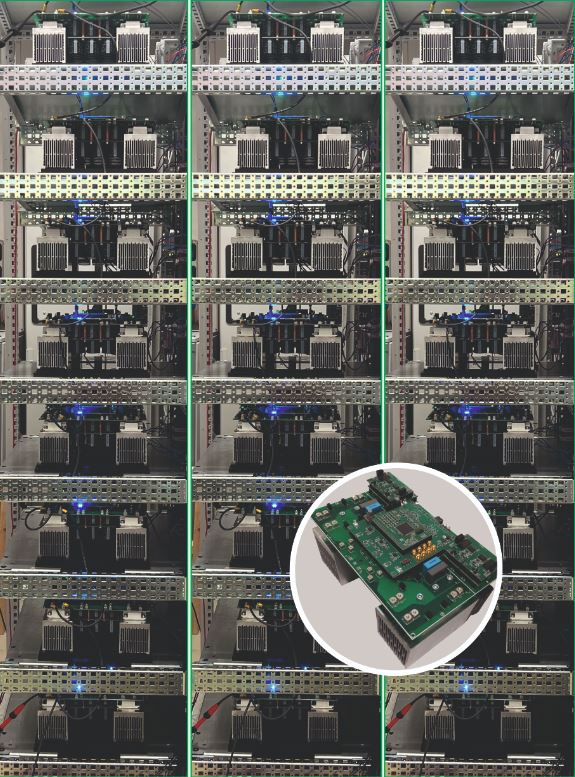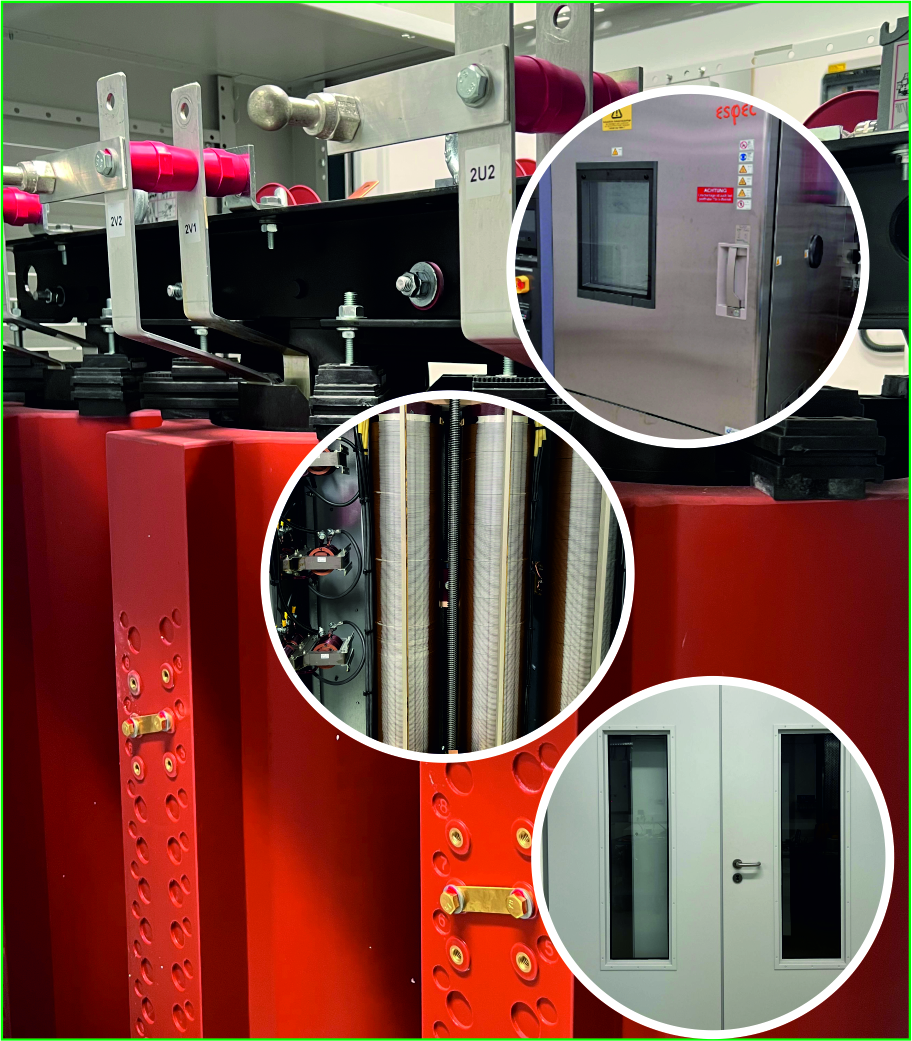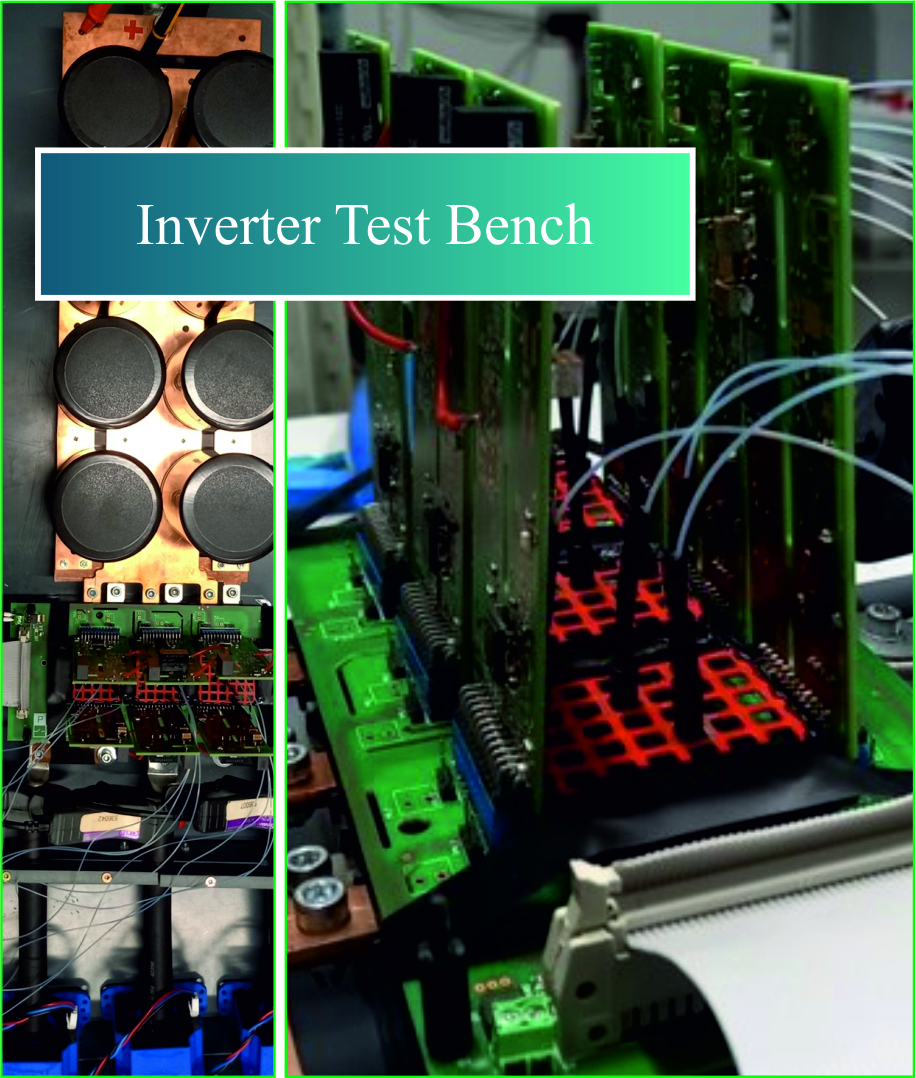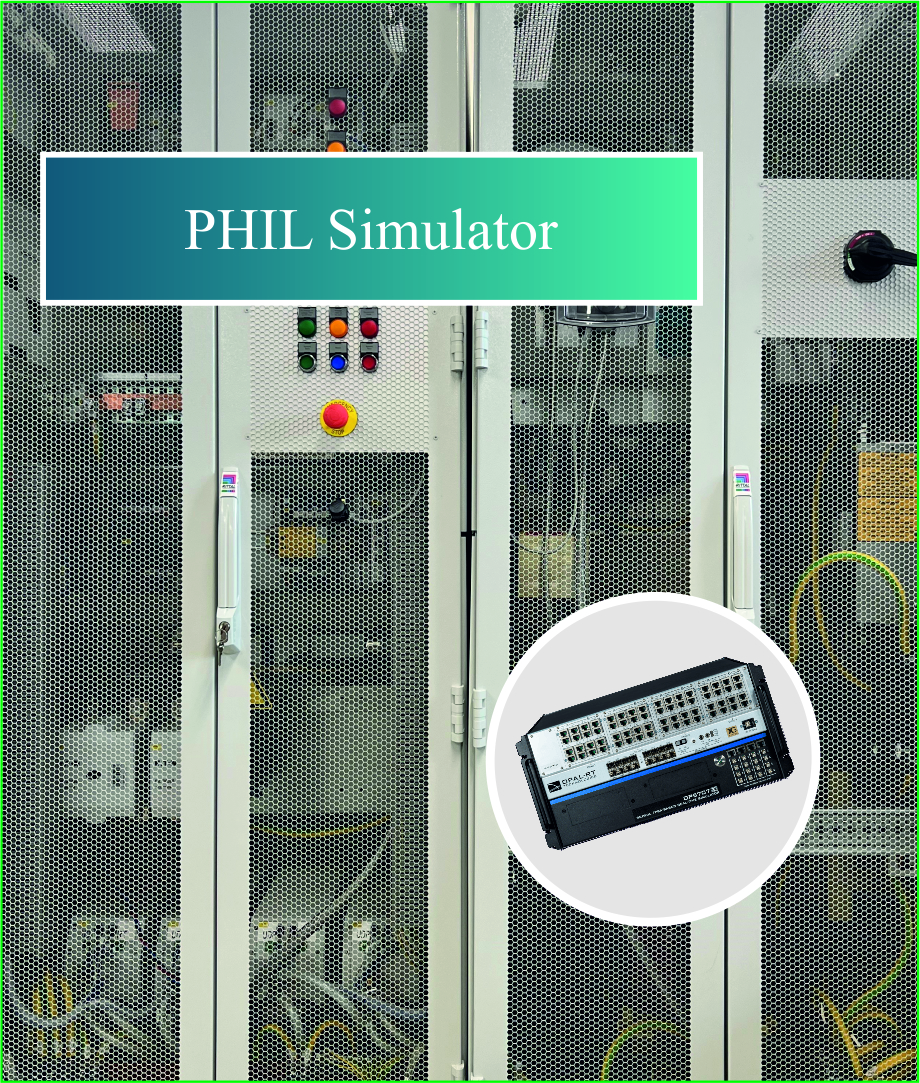Fraunhofer ISIT has developed a broad range of expertise and facilities, including MV-power converters for grid forming and storage management systems. With its laboratory equipped with state-of-the-art instrumentation, ISIT is ideally suited to testing and prototyping medium-voltage components and converters. By combining ISIT‘s know-how with its clients‘ technical requirements, ISIT can design advanced MV solutions to develop the modern hybrid grids of the coming years.
Medium Voltage Lab
Tabbed contents
Modular Multilevel Converter Prototype

Fraunhofer ISIT develops high power modular multilevel converters (MMCs). Our 10 kV prototype, designed for direct connection to the medium voltage grid, has the following features:
- 10 kV Modular Multilevel Converter with 500 kVA processing capability
- 48 modules, 9 level output voltage
- Suitable for implementing MVAC, MVDC, and hybrid grids
- Decouple grids regardless of frequency, voltage and quality
- Integration of renewables and energy storage systems to the grid
- Wide DC output voltage range for medium-voltage systems
- Control load flow and provide reactive power
- Step-down operation to increase inter-connectivity to hybrid grids
- DC fault ride-through by adopting full-bridge technology
- Innovative overcurrent management to support AC grids
Test Fields

The test fields at Fraunhofer ISIT cover a wider area which includes several test benches with state-of-the-art equipment. Using the latest technologies, wide range of tests can be executed at the medium voltage laboratory, from large-scale test benches to component-level testing facilities with circulating power up to 1 MW facilitated by liquid and air cooling.
Inverter Test Bench

- Availability of 3 phase 100 kW automotive inverter test bench
- Quick evaluation of different commercial and custom gate drivers and driving strategies
- Capable of simultaneous monitoring of 24 thermal hotspots for real design stress/mission tests
- Validation of different thermal models for the performance evaluation of the power semiconductor modules
- Evaluation of active thermal control strategies for different mission profiles
- Connection to an active load for full load profile control
Rapid Prototyping

- Development, validation, and implementation of AC, DC, and hybrid AC-DC Microgrids
- Real time simulation of grids with renewables and energy storage systems.
- Investigation of the interface between real devices and emulated systems
- Grid connected power converter modelling and control for stable and well-damped dynamics
- Scalable structure of the voltage source converter model for nonlinear converter-dominated power systems
- Improved reactive current support to enhance the voltage recovery capability under weak grid conditions
 Fraunhofer Institute for Silicon Technology
Fraunhofer Institute for Silicon Technology